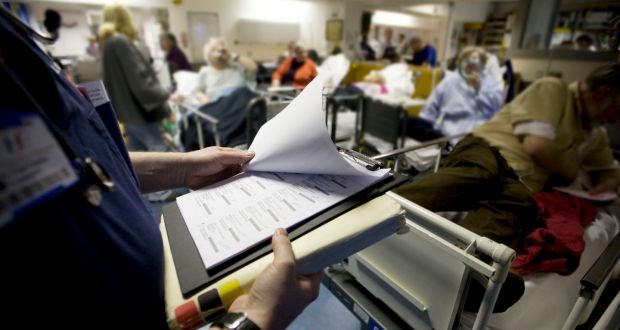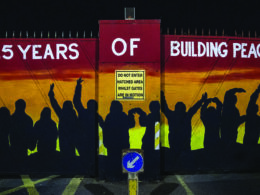By Finghín Kelly
The Irish health system is at breaking point. Last year was the worst year on record for hospital overcrowding. An incredible 118,367 people were without beds throughout the year. This represents a near trebling since 2006!
2020 is set to be another record-breaking year with the first week of the year being the worst week on record and a total of 12,024 on trolleys for the month of January.
Waiting lists gets bigger
It is not just in the Emergency Departments where the health service is at breaking point. There are record numbers on waiting lists for treatment. Much like the housing statistics, the government has become adept at spinning these figures; but even on the official figures, over half a million are waiting to see a specialist while 66,563 await surgery. Behind these figures are countless examples of people waiting for procedures that would transform their quality of life and even save their lives.
To make matters worse the HSE has been implementing a de facto recruitment freeze as they are forced to cut their budgets. This is resulting in beds and wards not being opened and making the situation worse.
Workers in the health service are at breaking point. Working in underfunded and under supported services on low pay is forcing many workers to take jobs abroad or to leave healthcare altogether.
Class inequality
The health service is one of the most unequal in Europe. If you are poorer, do not have private health insurance and can’t afford out of pocket expenses you are more likely to delay treatment, spend longer on waiting lists and have worse health as a result. This is graphically seen in the shocking statistic that if you are poor your life is cut by one-fifth compared to people who are better off!
This crisis did not occur overnight. It is the product of decades of underfunding. The government likes to point to statistics that show Ireland’s spend on healthcare per person being one of the highest in the world. However, when you dig down you will find that much of that spending is from private insurance and out of pocket spending. The Irish state is actually one of the lowest spenders on healthcare in the OECD. The spending is also on the back of decades of underspending. Huge cuts in the 80s and 90s were never made up for.
Privatisation bonanza
This crisis is not an accident: it is a bonanza for the profiteers in the health service. It is pushing more people into taking private health insurance and allowing the privatisation of the waiting lists through the National Treatment Purchase Fund to become politically palatable.
The increased privatisation of the health service will make the health service more expensive, less efficient and more unequal.
The Sláintecare plan is being trumpeted by all the major parties. Many of the measures outlined in Sláintecare would be welcome, however the plan is far short of what is needed. It is light on detail and is quickly showing itself to be more spin than real change. Sláintecare does not fundamentally deal with the two-tier system and is not being backed up with funding – only €5.8bn is allocated over a whole decade. This is a tiny proportion of the funding needed to deliver real changes to the health service.
The health service we need
Instead we need an Irish National Health Service based on a single tier, free at the point of use system for all. To deliver this the system would need massive investment funded through a fair and progressive tax system that taps the huge wealth in the pockets of the major corporations and super-rich. For example, we could double the corporation tax rate for those companies earning more than €800,000 per annum in profits.
Such a system would end the inequality and waste that is endemic from the private profiteering and ensure that adequate and safe staffing levels could be achieved with decent pay and conditions for all workers.











